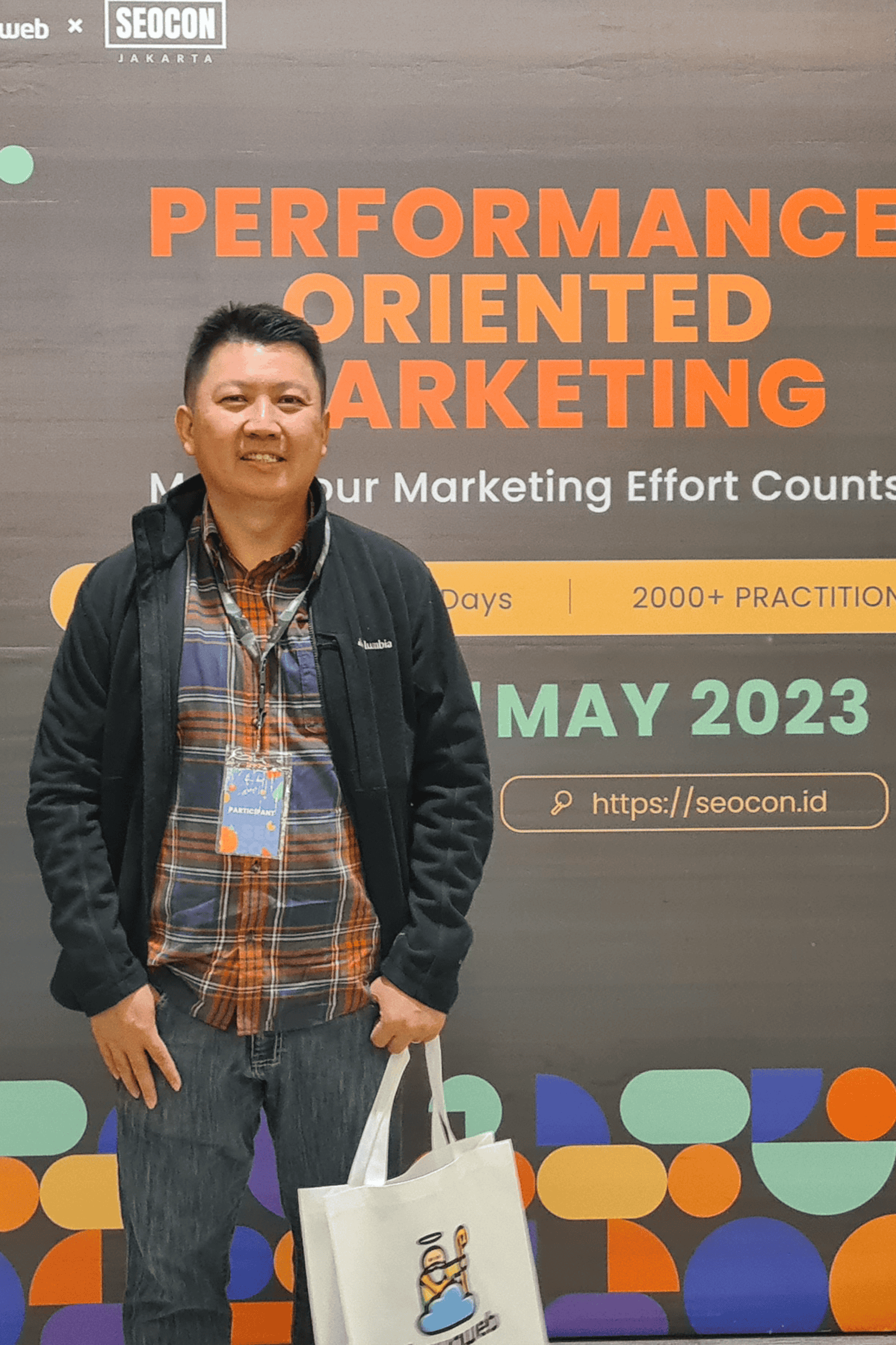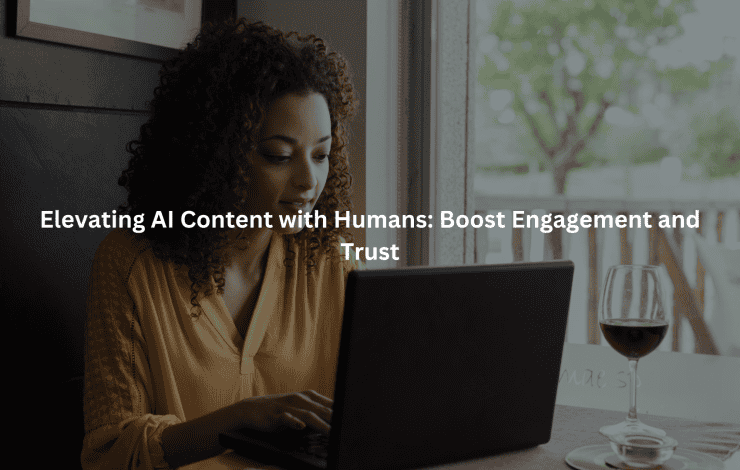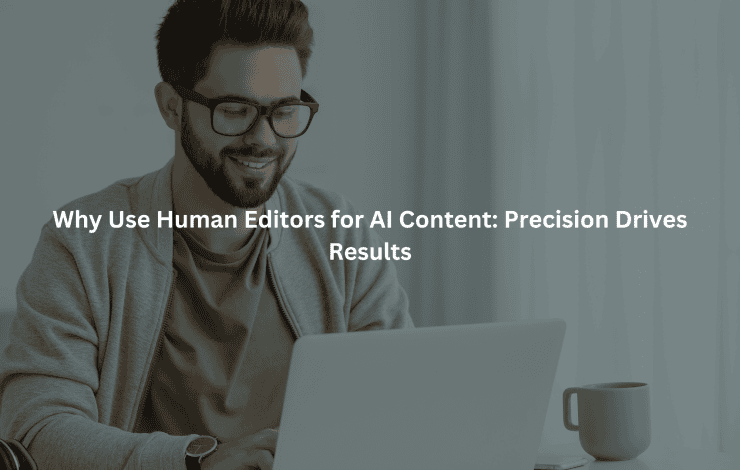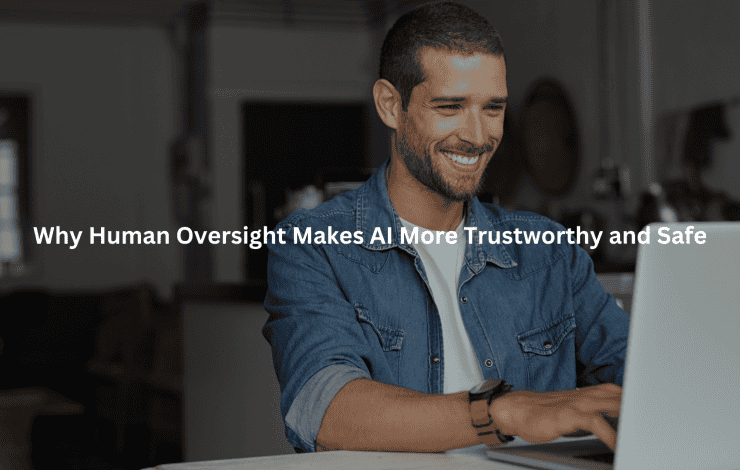AI churns out content quickly, sure, and you can scale it up without breaking a sweat. Still, it usually skips over the small stuff, context, nuance, trust. That’s where human editors come in. Businesses lean on these folks to catch mistakes, keep the brand’s voice steady, and tweak things so both people and search engines actually pay attention.
It’s not just about fixing grammar or swapping out words, either. Editors look for those subtle details that make a piece feel right, so the end result isn’t just another block of text. It’s something that actually works, probably.
Key Takeaway
- Human editors double-check facts and keep the brand’s reputation safe.
- They tweak keywords and structure so search engines can actually find the content.
- When AI and editors work together, the end result usually gets better results.
Ensuring Content Accuracy and Brand Integrity
Every time an AI draft lands on the desk at Jet Digital Pro, the same problems show up. Numbers that don’t quite add up. Details that feel just a bit off. And the language, sometimes it’s stiff, like it was written by someone who only skimmed the surface, not someone who actually knows the subject. That’s why nobody here trusts AI to do the job alone. Anyone who cares about their reputation probably shouldn’t, either.
AI Limitations and Risks
Common AI Content Errors
AI can spit out a full article in seconds, but it’s got a habit of making things up. There was this finance client who almost published a post with a fake mortgage rate. The stat looked real, decimal points, a citation, even a source that sounded official. But it was just made up. Happens all the time. AI drops in fake details, old info, or twists the facts, because it’s just guessing what comes next, not checking if it’s true. [1]
Implications for Sensitive Industries
This stuff matters even more if you’re writing about health, money, or the law. One wrong number in a legal guide, and someone could make a big mistake. If a health article uses outdated advice, it’s not just embarrassing, it could actually hurt someone.
Brands can lose trust fast, and in regulated fields, messing up can mean fines or lawsuits. Agencies have come to us after Google slammed their sites for low-quality or misleading content, all because they trusted AI and skipped the second look.
Editorial Fact-Checking and Verification
Human Oversight Processes
The process at Jet Digital Pro isn’t flashy, but it works. Editors go line by line. Every stat gets checked against at least two solid sources. There are tools, sure, but mostly it’s just careful reading, slow, like you’re double-checking your own work. Sometimes that means calling an expert or digging through government records. It’s the kind of slow, careful work AI just can’t do, because it doesn’t know what it’s missing.
Consistency with Brand Voice
AI misses out on the brand’s personality, too. You can give it prompts, but it won’t pick up on the inside jokes or the little phrases your team always uses. The brands we work with want their voice to come through everywhere, whether it’s a dense white paper or a quick Instagram post.
Editors tweak the tone and style, sentence by sentence, until it all sounds like it came from the same crew. That’s how you build trust. Not with generic, fill-in-the-blank stuff, but with words that actually sound like you. Context matters, too. One time, the AI kept using American spellings and references for a U.K. fintech client. We rewrote everything to fit the local style, currency, idioms, the whole deal. The client noticed. So did their customers.
Upholding Ethics, SEO, and Content Quality
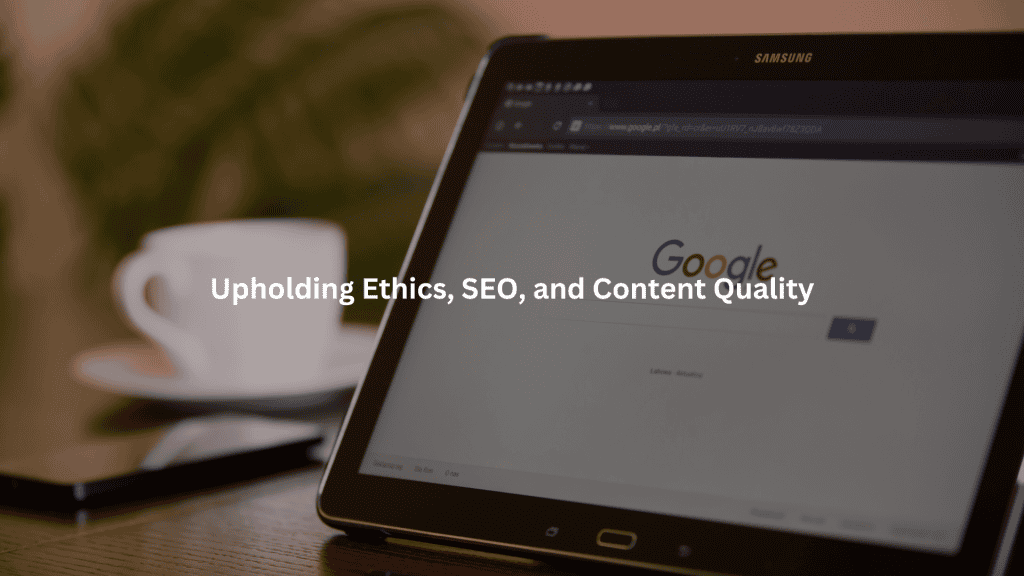
We’ve all seen what happens when bias sneaks into content. At Jet Digital Pro, we catch it before it ever sees the light of day, because we care about more than just search engine ranking. We care about fairness, inclusivity, and making sure everyone can trust what they read.
Detecting and Correcting Bias
Identifying Unintended Biases
AI models are trained on mountains of data, some of it good, some of it not so good. That means bias can creep in. Sometimes it’s subtle, sometimes it’s glaring. We use tools to analyze the text, but mostly we read like a real person would.
We ask, is this language fair? Does it exclude anyone? Is it suggesting something that isn’t true? When we catch phrases that don’t sit right (and we do, often), we rewrite them. We’ve seen AI-generated content describe certain professions or groups in ways that felt off, so we fix it before anyone else sees it.
Ethical and Legal Compliance
There’s a legal side, too. Plagiarism checks are non-negotiable. We run every piece through multiple detectors. Copyright law isn’t optional, and neither is proper sourcing. We had a client who almost published a how-to guide that was dangerously close to a competitor’s.
We spotted it. No drama, just a quick rewrite. Most AI tools don’t understand the nuances of copyright law, but we do. And we keep ourselves updated on changes, especially as the laws around AI-generated content keep shifting.
Enhancing Semantic SEO and Engagement
Semantic Optimization Strategies
SEO isn’t just about stuffing the right words into a page. It’s about understanding what people want, what they’re actually searching for, and answering it in a natural way. We build keyword clusters, not just lists.
For a recent SaaS client, we mapped out core, related, and long-tail keywords, then structured the content to move naturally from one to the next. We use contextual keywords, related search terms, and make sure every heading and paragraph supports the primary search intent.
Improving Readability and Flow
AI output can be stiff. It repeats phrases, uses awkward transitions, and sometimes just rambles. We break up long sentences, add bullet points, and cut unnecessary repetition. We make sure paragraphs start strong, because we know Google scores salience based on text position. If something’s confusing, we rewrite it until it makes sense. We want readers to get what they need quickly, and we want them to stay engaged until the end.
Personalization, Strategy, and Performance
There’s no such thing as a generic audience. Our clients expect more than surface-level content, and so do their readers. That’s why every piece we work on gets personalized for its audience, its industry, and its purpose.
Tailoring Content to Audience Needs
Demographic and Industry Relevance
We ask for details. Who’s reading this? What do they care about? Are they experts or beginners? For one client serving both small business owners and corporate executives, we created two different versions of the same guide, one with detailed technical breakdowns, and another with high-level summaries and practical examples.
We adjust terminology, examples, and even the level of explanation based on who’s going to read it. That’s not something AI can guess, because it has no real sense of context.
Enhancing Content Relevance
We don’t just throw in keywords for the sake of it. We research long-tail and latent semantic indexing (LSI) keywords, and make sure they fit naturally. We pay attention to what’s trending in related search terms and adjust the content structure to answer specific questions.
For a health and wellness brand, we saw a spike in search for a new supplement. We rewrote existing articles to include that term, naturally, not awkwardly, and watched organic traffic increase by 18 percent in three months.
Aligning Content with Business Objectives
Editorial Standards and Quality Control
Every agency has its own goals, so we set our editorial standards accordingly. We establish clear guidelines for AI-generated drafts, what’s acceptable, what needs human touch, and what gets sent back to the drawing board. Before anything goes live, we do a final review to make sure it aligns with the client’s business goals, voice, and strategy. It’s a back-and-forth process. Sometimes we go through three or four rounds of edits before everyone’s happy.
Measuring Content Performance
We don’t just hit publish and move on. We track organic traffic, keyword rankings, and engagement metrics for every piece. If something isn’t working, we analyze the data and tweak the content.
We’ve had cases where a blog post ranked on page two for months, then jumped to the top five after we restructured the headings and added more semantic keywords. We use SEO tools but rely on our judgment, too. It’s not just about numbers, it’s about making sure the content does what it’s supposed to do.
Workflow Integration and Future-Proofing

You can’t scale content production without a process. We built ours at Jet Digital Pro to blend AI efficiency with human judgment, and we’ve refined it over hundreds of projects.
Human-AI Collaboration Models
Integrating Editors into AI Workflows
We assign roles from the start. AI drafts, human reviews. Simple. The editor’s job is to catch what the AI misses, facts, tone, structure, and context. We use SEO tools to streamline the editing, but at the end of the day, it’s about reading with a critical eye. Editors work closely with writers and project managers. Everyone knows their lane, and that keeps things moving fast without cutting corners. [2]
Leveraging AI for Efficiency, Editors for Quality
Are You a Digital Agency?
White Label SEO Content Services for Agencies
Scalable, customizable, and results-driven content solutions for your clients.
AI is great for the grunt work, churning out first drafts, pulling data, suggesting keywords. But we never let it publish unchecked. We use natural language processing to analyze keyword density, semantic relationships, and content gaps. Editors make the final call on what stays and what goes.
That’s how we can handle high-volume projects without sacrificing quality. We’ve produced up to 300 blog posts in a month for a single agency, all while maintaining the same editorial standards.
Case Studies and Ongoing Optimization
Real-World Examples
Here’s a case that stuck with me. A digital agency approached us for help after their AI-generated content failed to rank. We audited their site and found generic articles, missing keywords, and inconsistent tone. We took those drafts, ran them through our 11-step editing process, and rewrote large sections for accuracy and engagement.
Within four weeks, their main service page jumped from page three to the top of page one for three target keywords. Engagement metrics doubled. We saw similar results with a SaaS client who needed technical blog posts that actually made sense to their customers. AI got them partway, but our editors took them the rest of the way.
Continuous Improvement Practices
Content isn’t a set-it-and-forget-it thing. We run regular audits on published pieces, checking for freshness and relevance. If Google updates its algorithm, we’re on it, rewriting articles, refreshing keywords, and making sure every page stays competitive.
We update strategies based on what’s working now, not what worked six months ago. We keep a close eye on search traffic and keyword rankings, and we aren’t afraid to make big changes if the data says it’s time.
FAQ
How do human AI editors improve keyword relevance without falling into keyword stuffing traps?
Human AI editors can spot when content tries too hard to match keywords. They balance keyword density by focusing on context, not repetition. That means using keyword variations and long-tail keywords while still sounding natural. Editors also apply semantic SEO by analyzing keyword mapping and search intent to ensure search engine bots read content as valuable, not spam. They keep content relevance high while avoiding mistakes that drop website ranking.
Can human editors help AI-generated content align better with search intent and semantic relationships?
Yes, AI can miss search intent. It often misreads how contextual keywords tie into semantic relationships. Human editors fix that by reshaping content structure to match user intent more closely. They use tools for keyword analysis and keyword clustering to refine the SEO strategy. Editors ensure content depth stays strong and related search terms fit logically. That’s what drives better organic traffic and stronger search visibility.
Why is topical authority hard to achieve with AI content tools alone?
Need a Strategic SEO Content Partner?
Let’s craft SEO content that ranks, converts, and grows your brand.
Talk to UsAI content tools often recycle facts without understanding content engagement or audience targeting. That weakens topical authority over time. Human editors build authority by refining on-page SEO with keyword discovery and SEO best practices. They improve content optimization by spotting gaps in semantic indexing and natural language processing. With thoughtful editing, content becomes trustworthy and matches what Google algorithms reward in search engine results.
What risks do businesses face by ignoring content freshness and human-led SEO content writing?
AI doesn’t always understand time-sensitive keyword competition or changes in semantic search. That can cause stale content to lose ranking factors fast. Human editors update pages to reflect current SEO performance, boosting content freshness and keyword relevance. They also adjust keyword density and structure to match the latest audience targeting trends. This keeps search engine optimization aligned with what users are actually searching.
How do human AI editors use keyword analysis to avoid SEO content that underperforms?
Without human input, AI might misuse LSI keyword research or misunderstand semantic relevance. That leads to weak search engine ranking and poor search traffic. Human editors fix that by using SEO tools to analyze keyword mapping and discover gaps in keyword clustering. They rewrite content to match keyword variations and related search terms naturally, improving website optimization and driving better SEO results overall.
Conclusion
Don’t trust AI to get everything right. Fact-check everything, even when it sounds smart. Read your content out loud, awkward phrasing hides in plain sight. Let your brand’s voice shine through, readers notice when it doesn’t.
SEO isn’t just about keywords anymore. Group related terms, answer real questions, and keep things current. Use AI for speed, but rely on humans for clarity and depth. That’s how content grows your business.
Need help? Talk to JetDigitalPro’s editors today.
References
- https://www.ibm.com/think/insights/10-ai-dangers-and-risks-and-how-to-manage-them
- https://www.researchgate.net/publication/387222921_Human-AI_Collaboration_Models_Frameworks_for_Effective_Integration_of_Human_Oversight_and_AI_Insights_in_Business_Processes
Related Articles
- https://jetdigitalpro.com/elevating-ai-content-with-humans/
- https://jetdigitalpro.com/how-human-improves-ai-writing/
- https://jetdigitalpro.com/role-and-value-of-human-ai-content-editors/
P.S – Whenever you’re ready,
we’re here to help elevate your SEO content.
Partner with us for strategic, scalable content that drives real organic growth.
Contact Us Now

